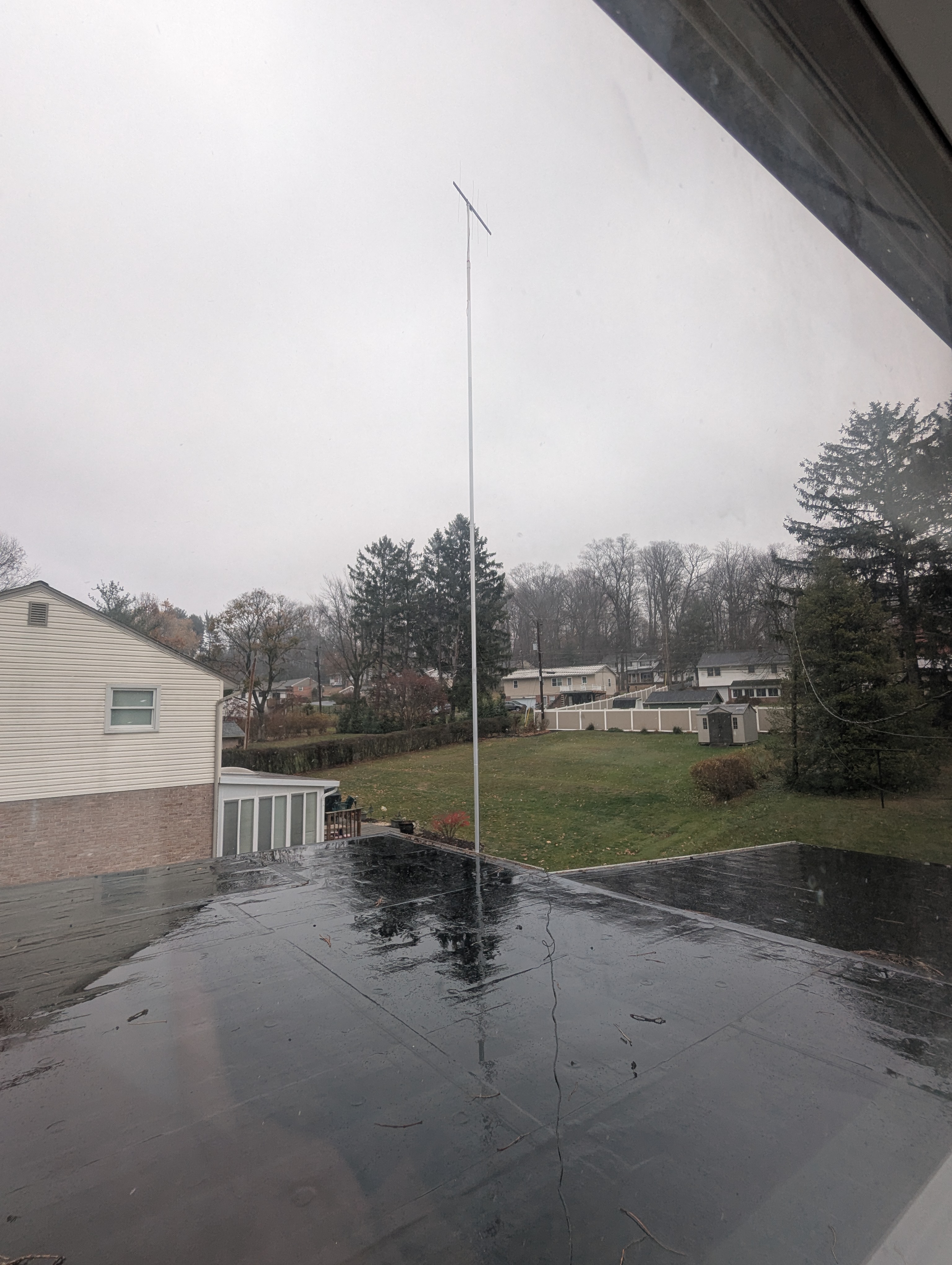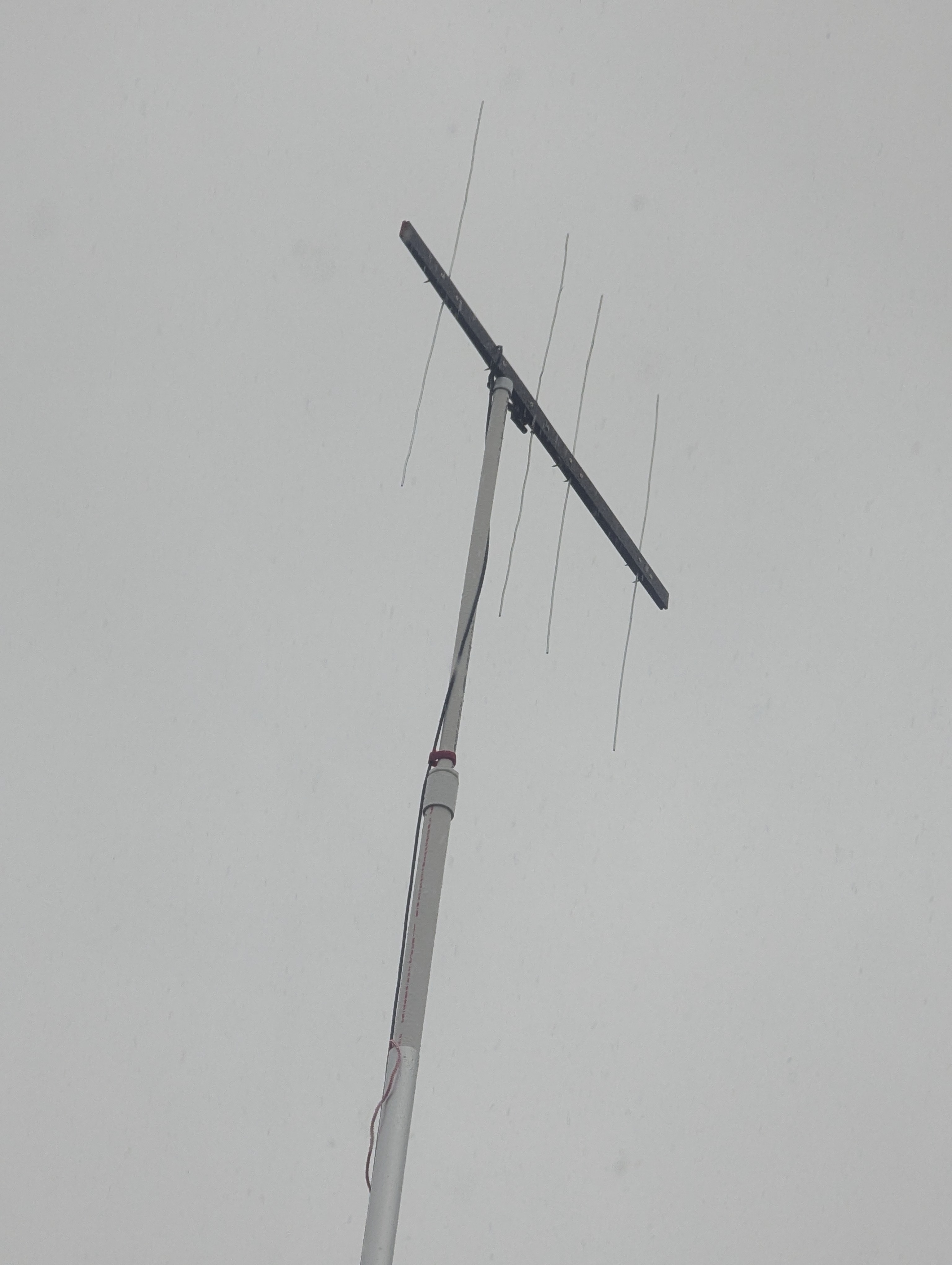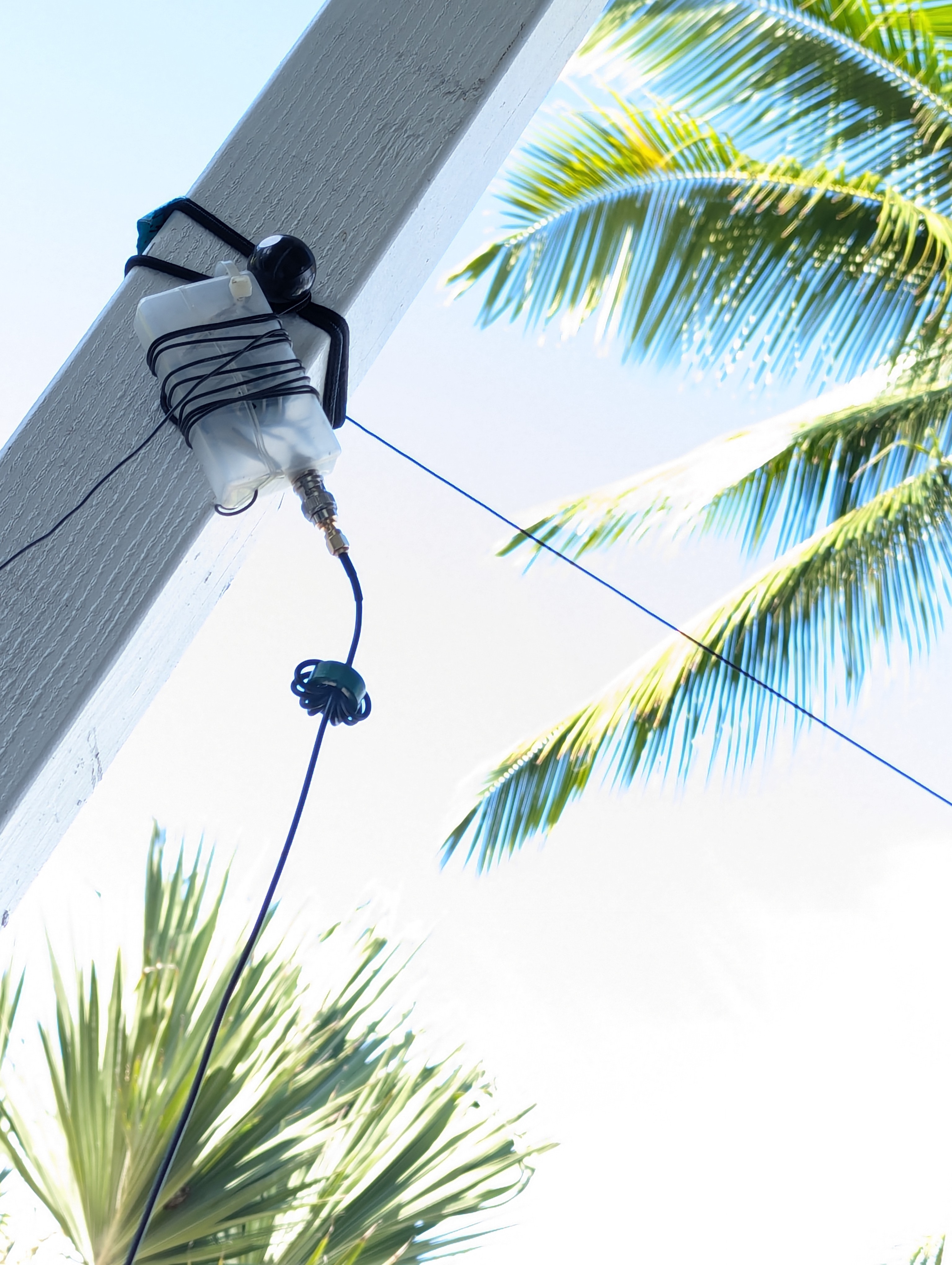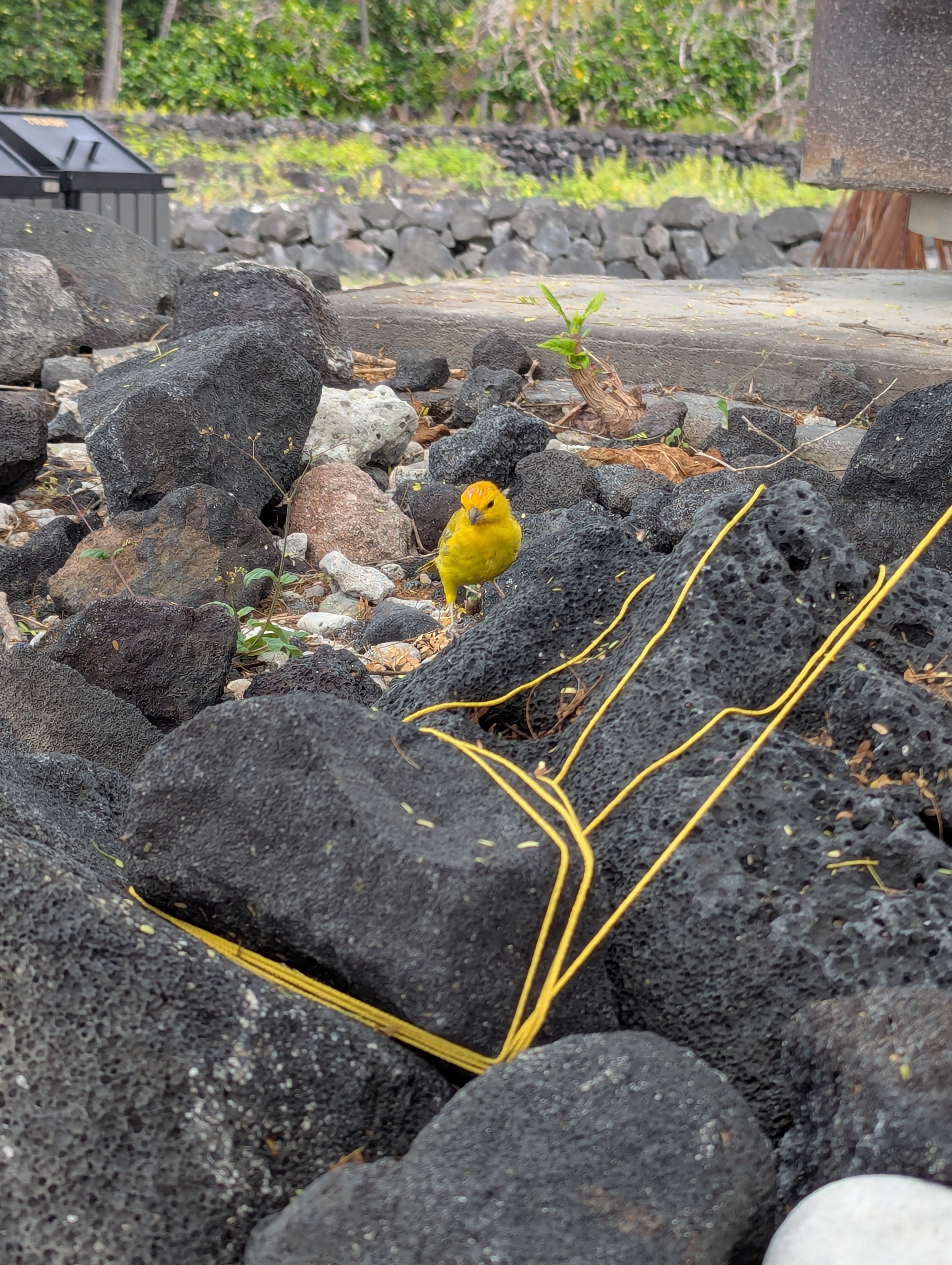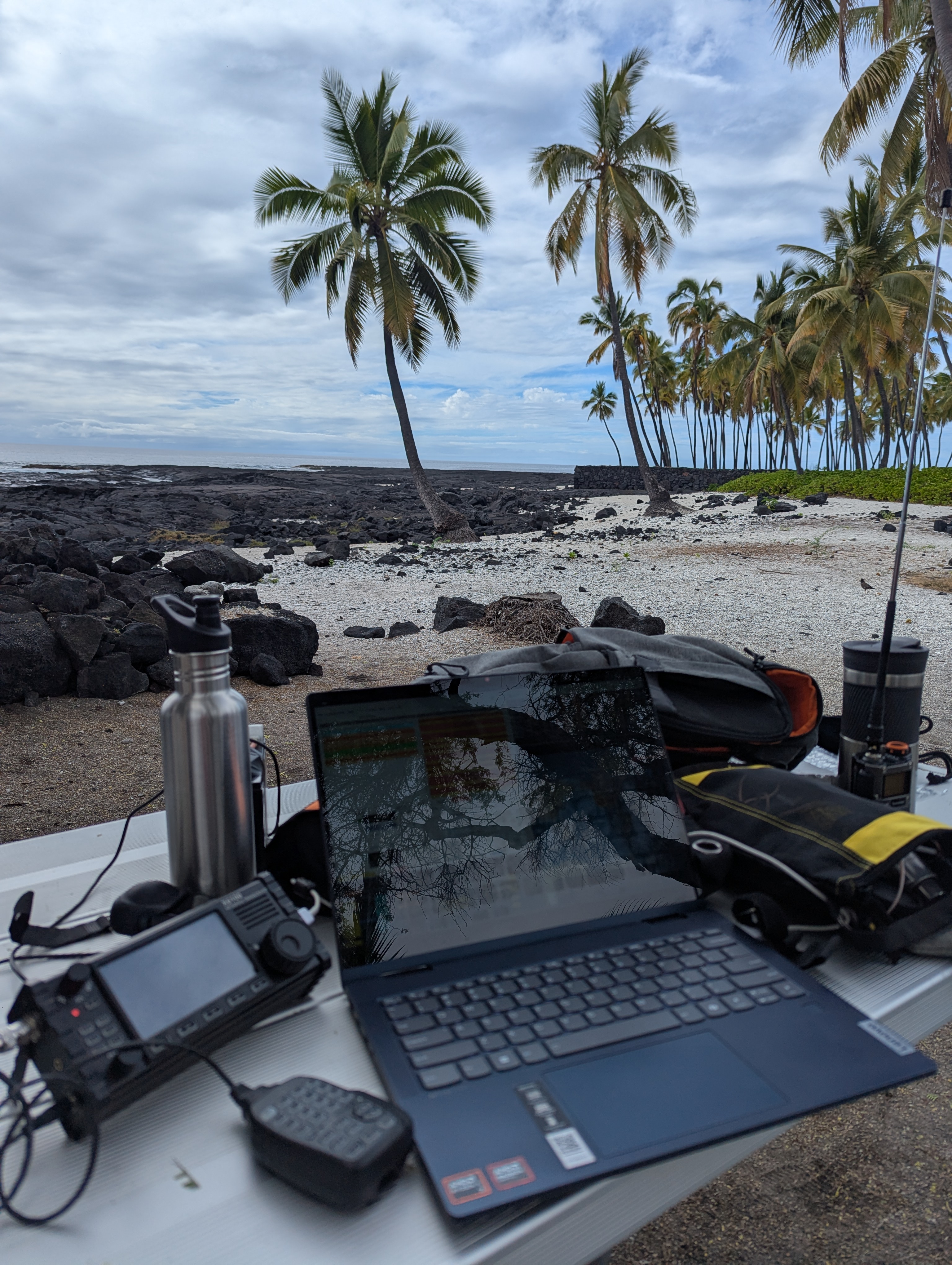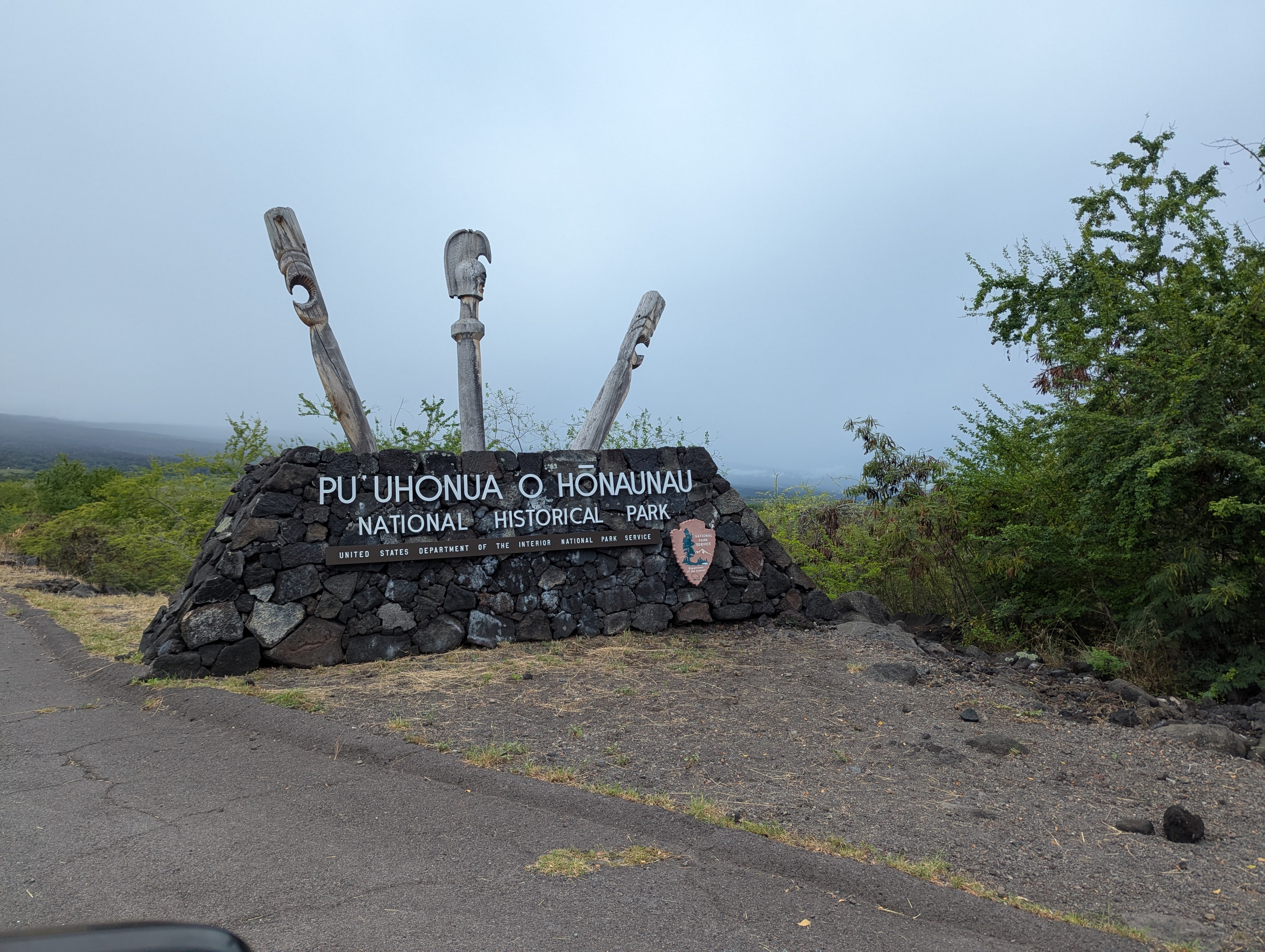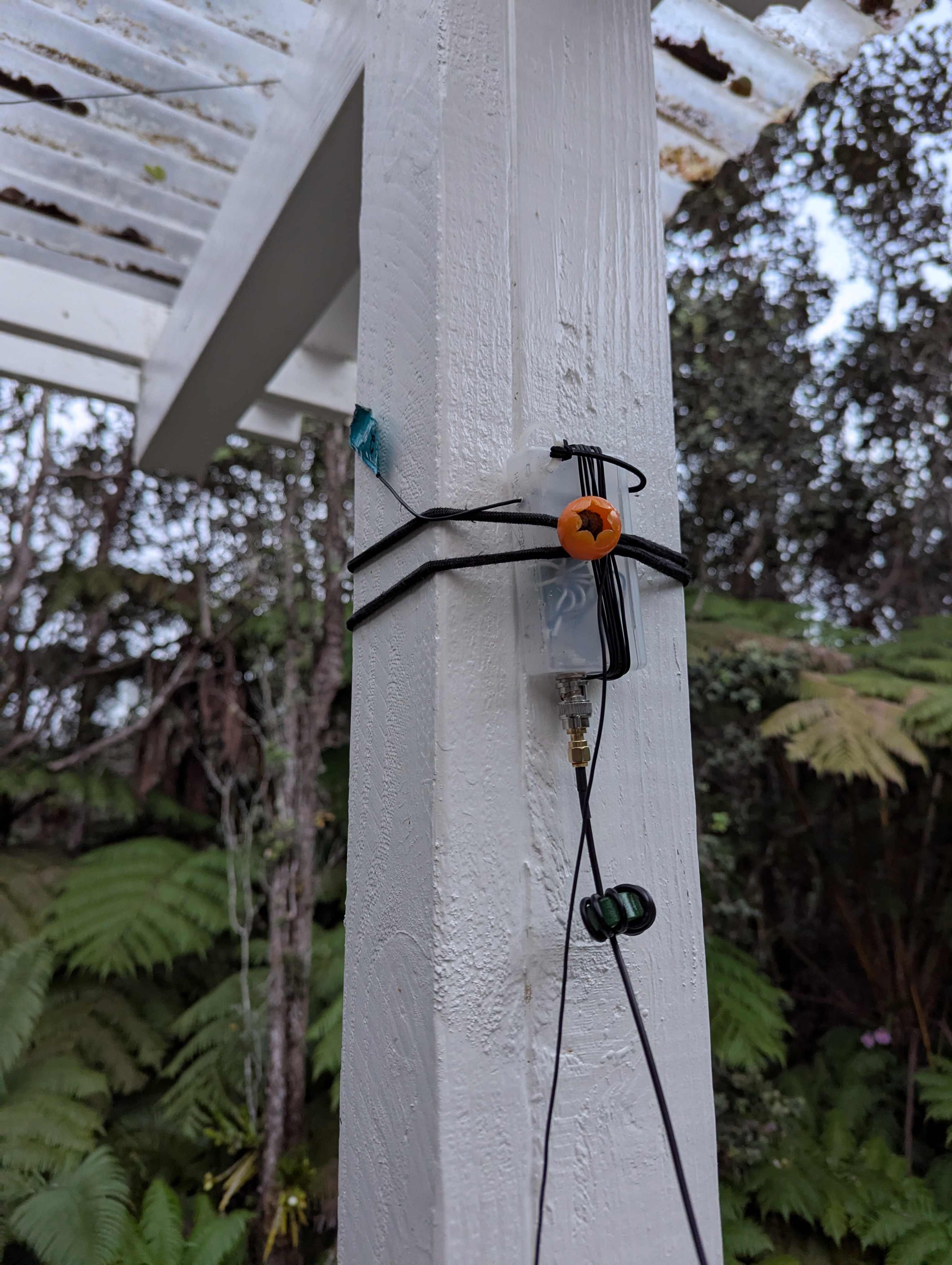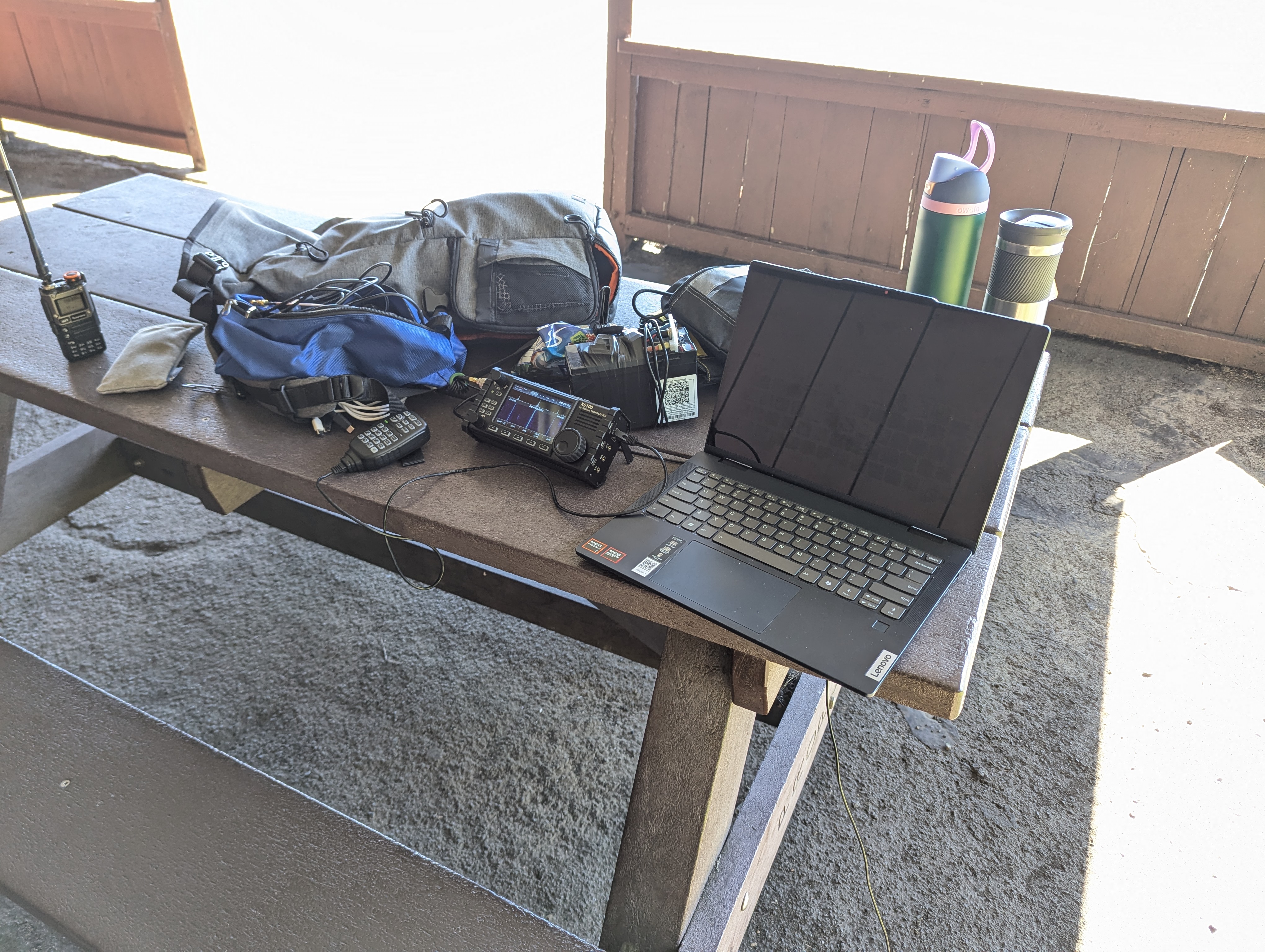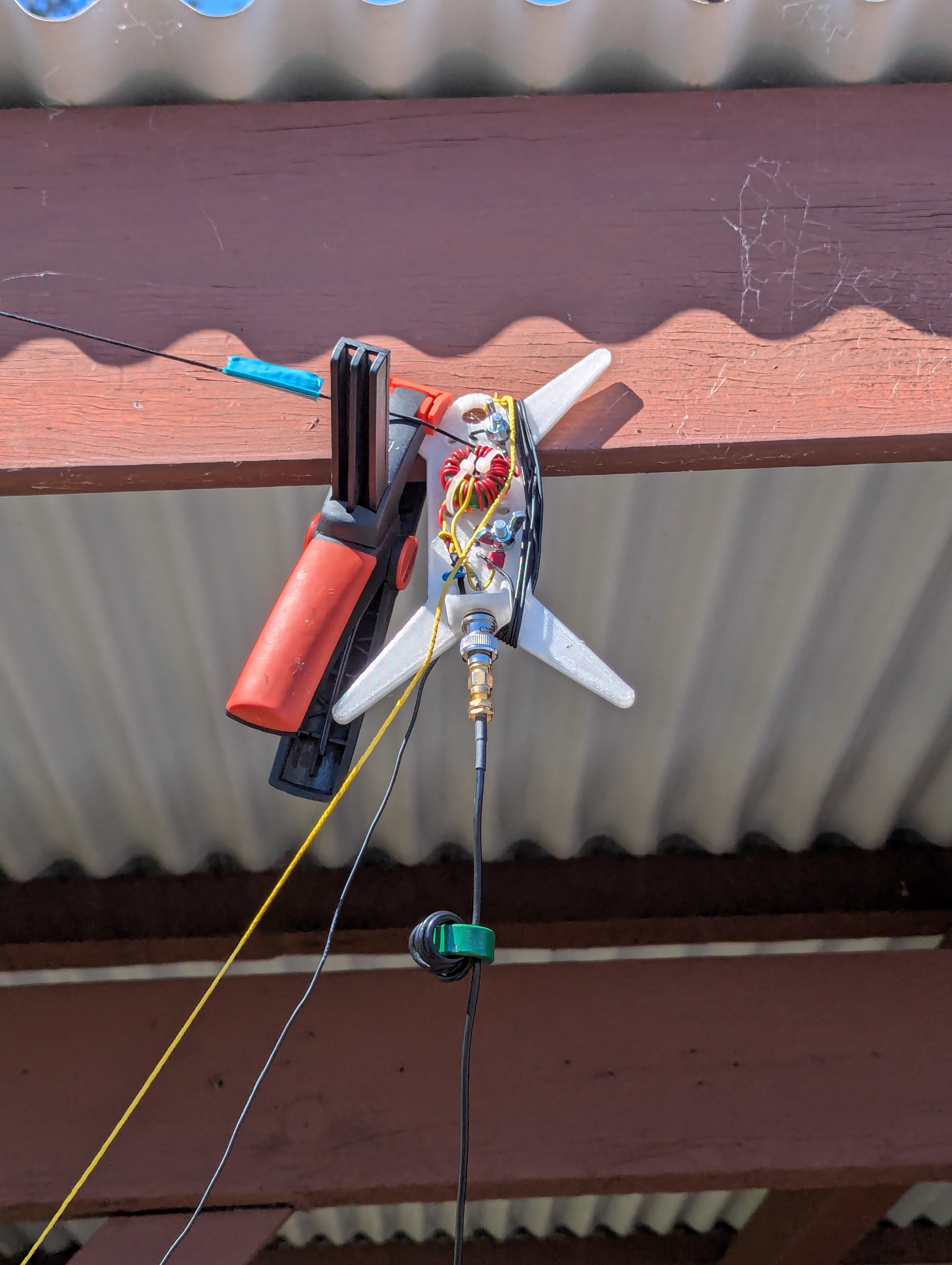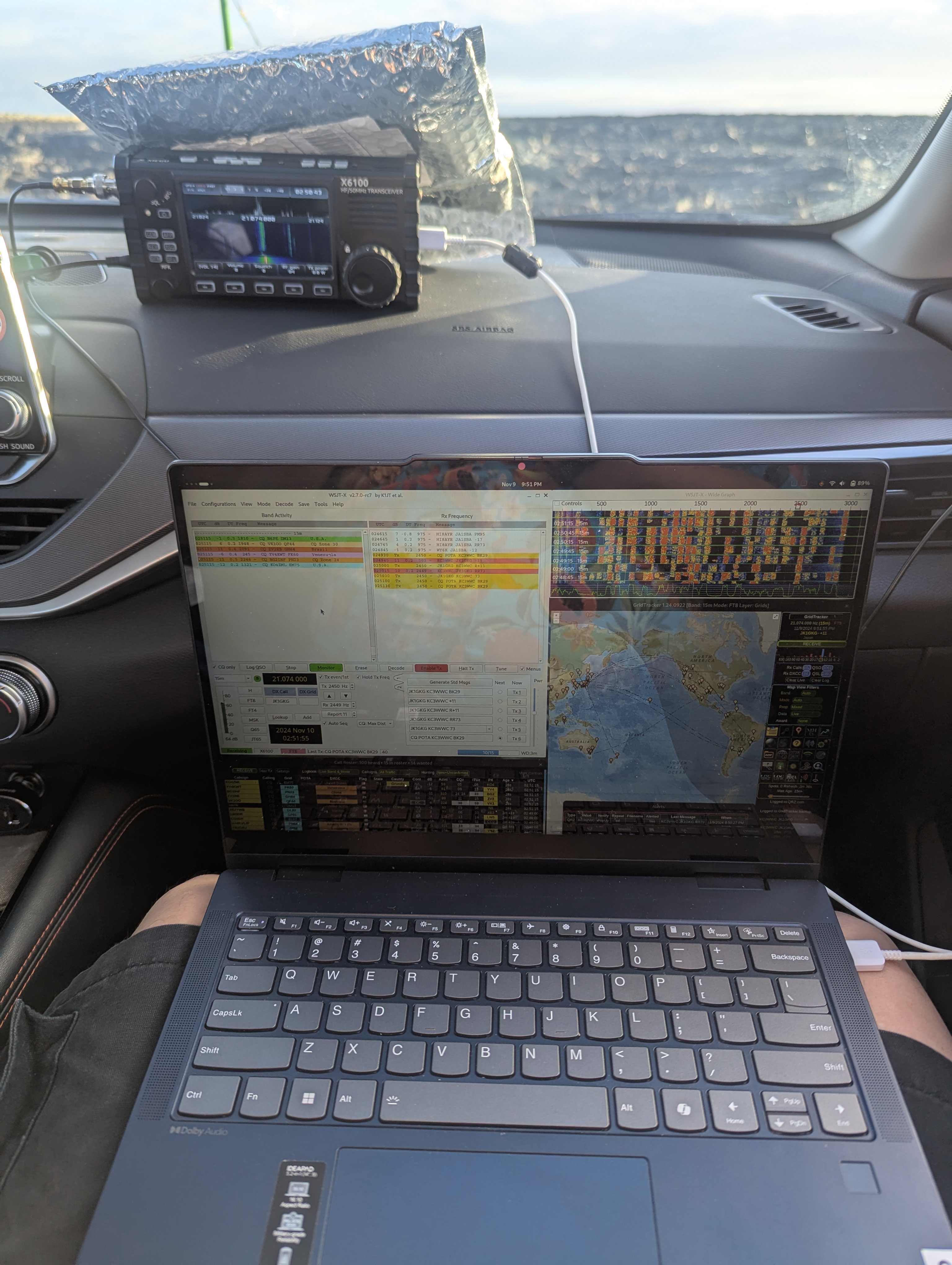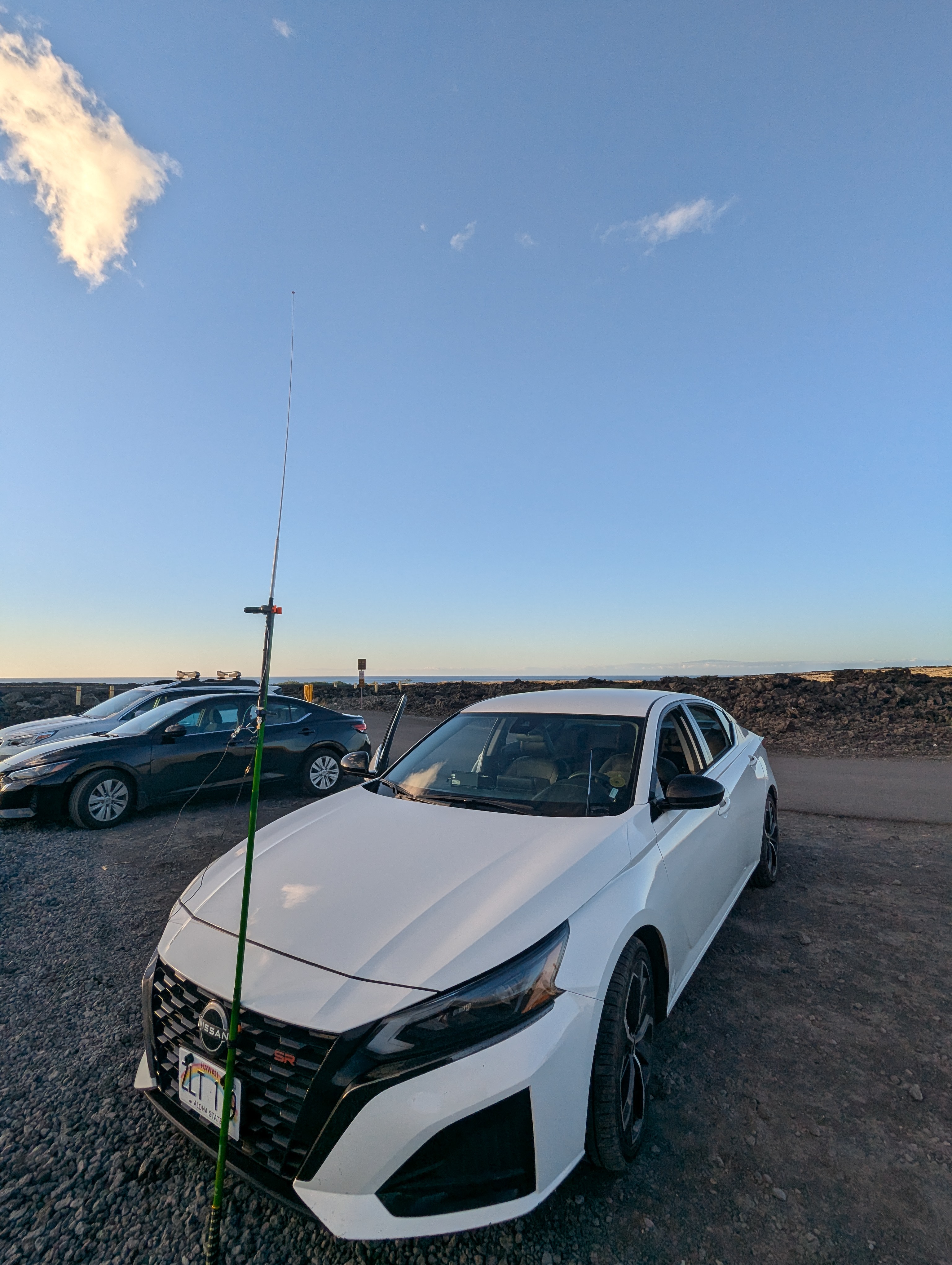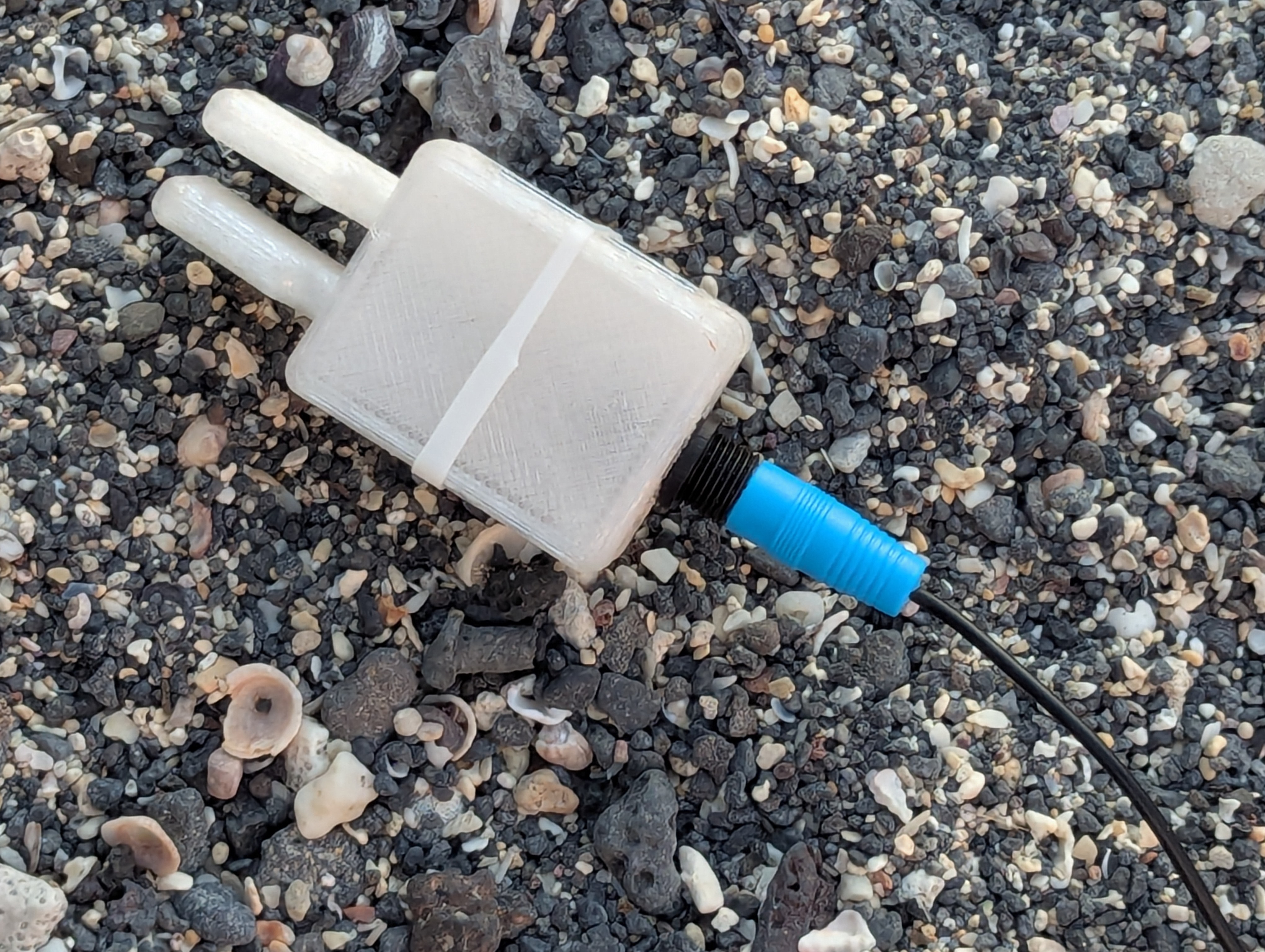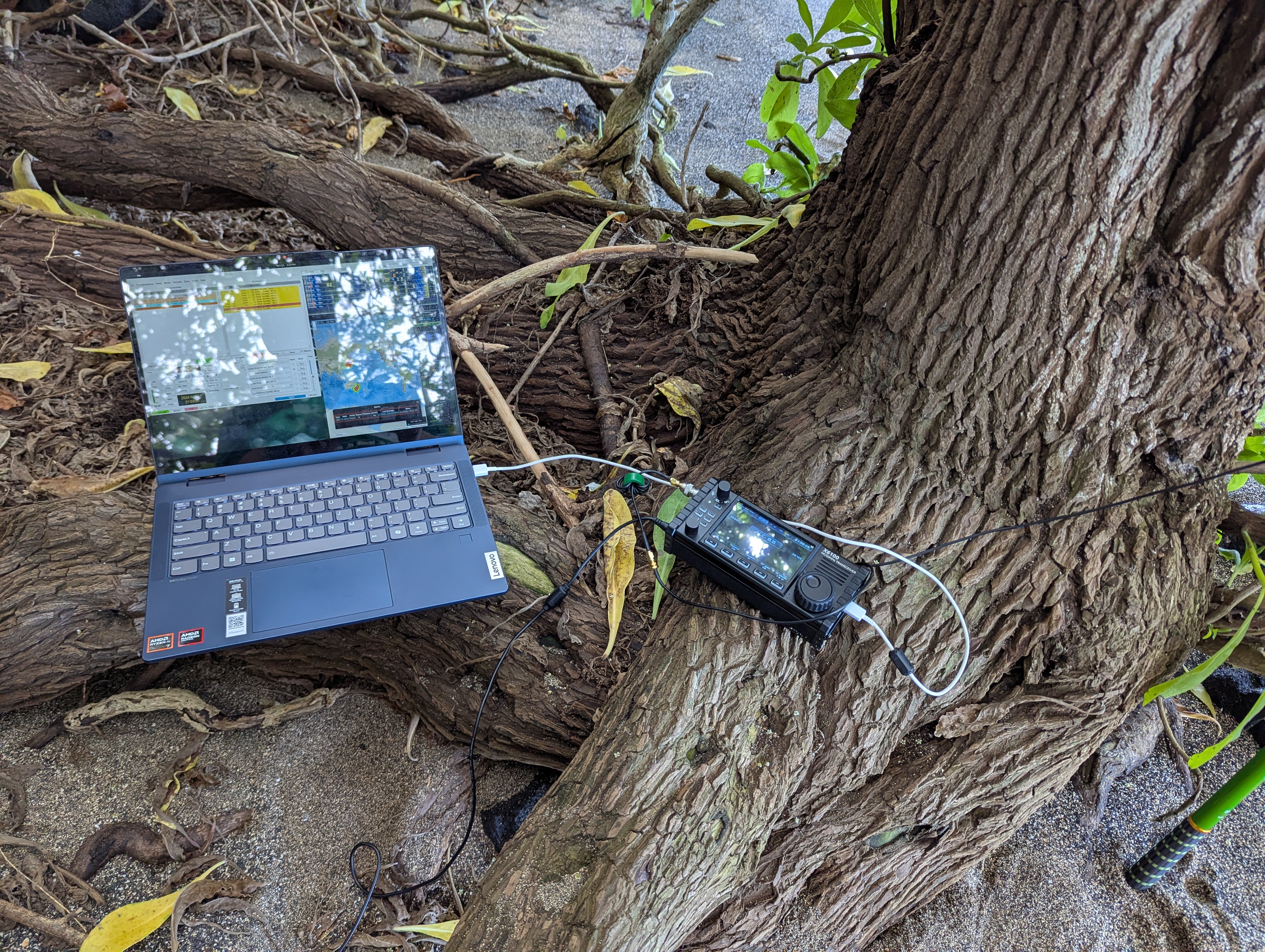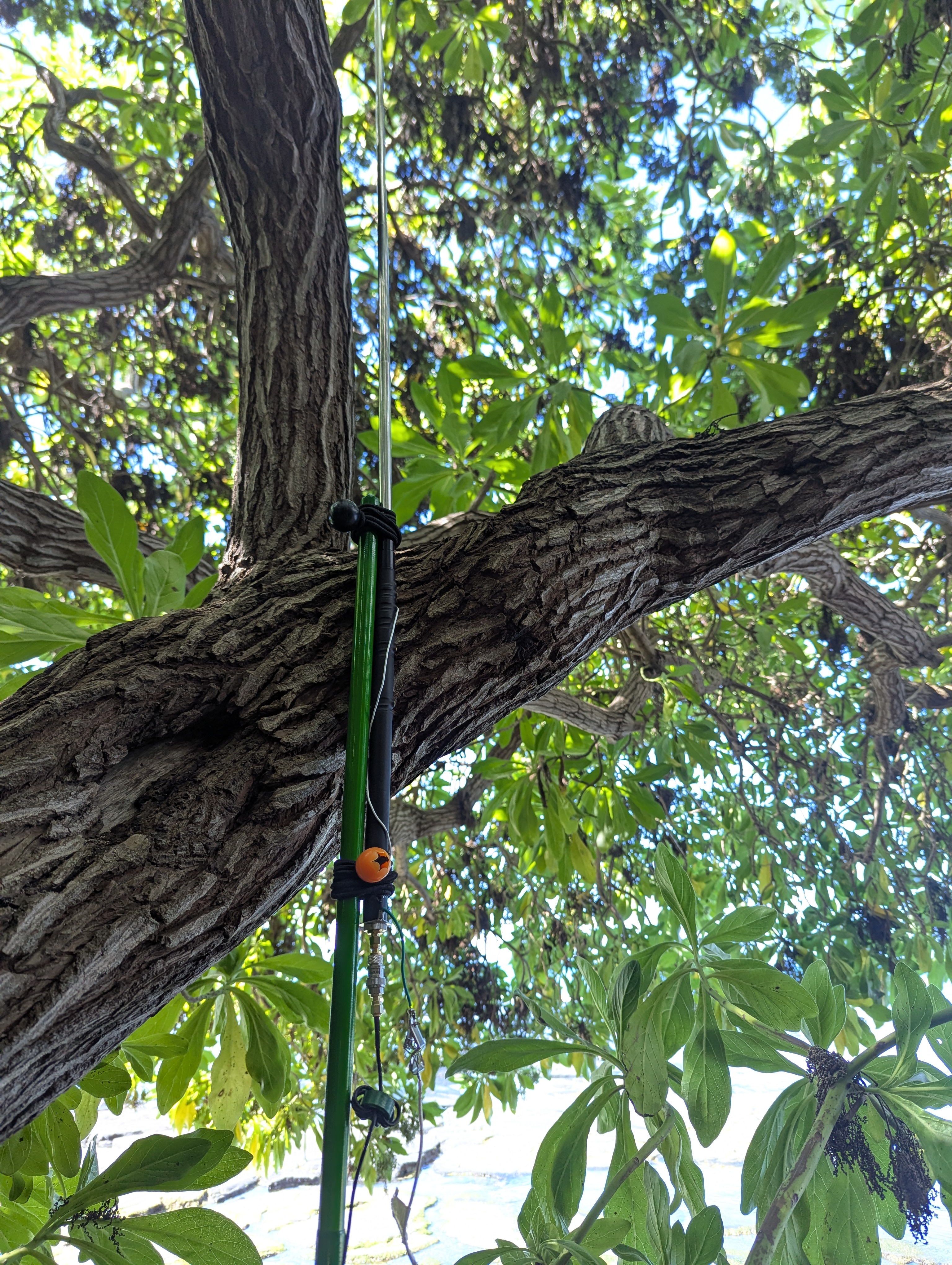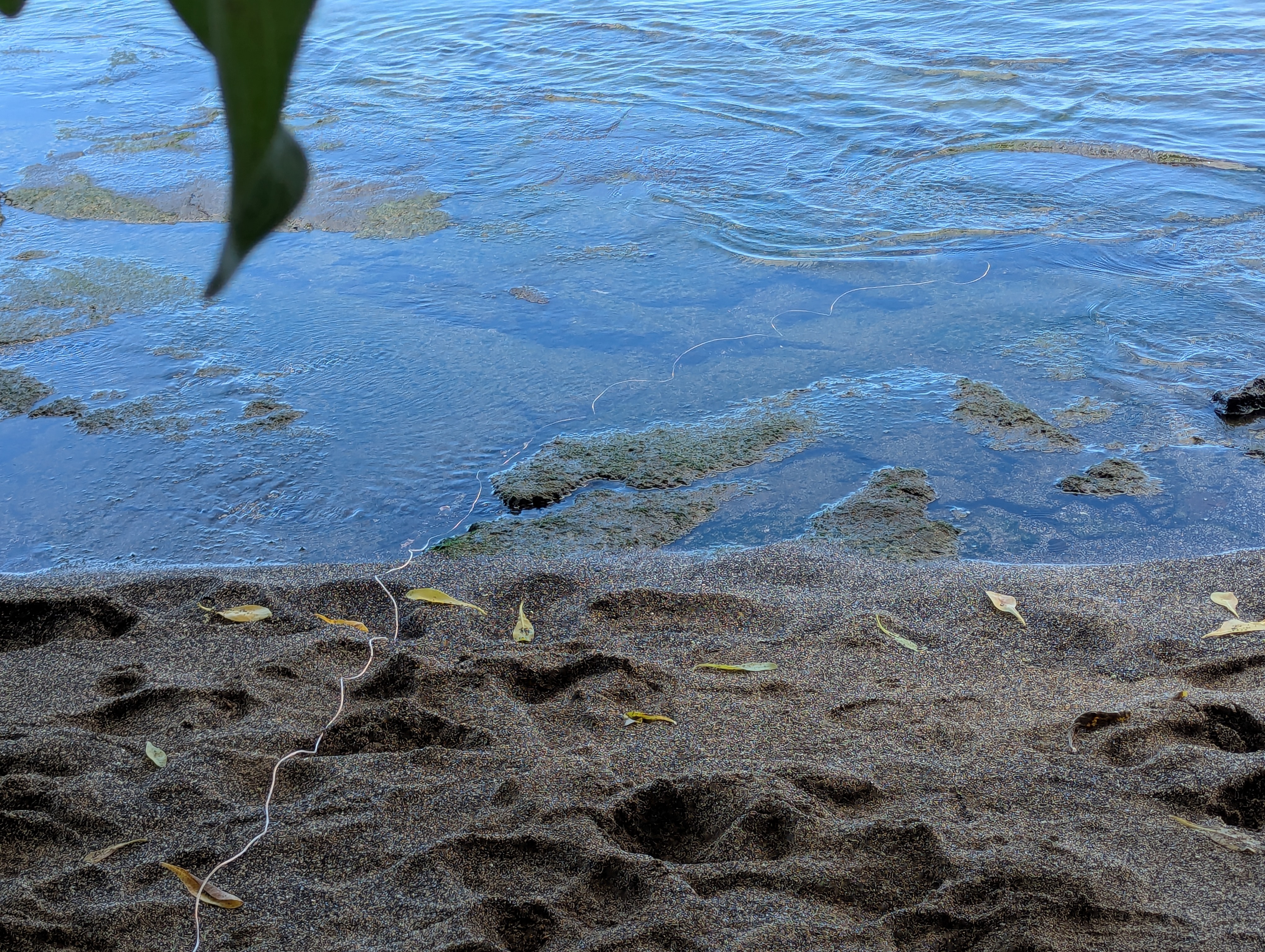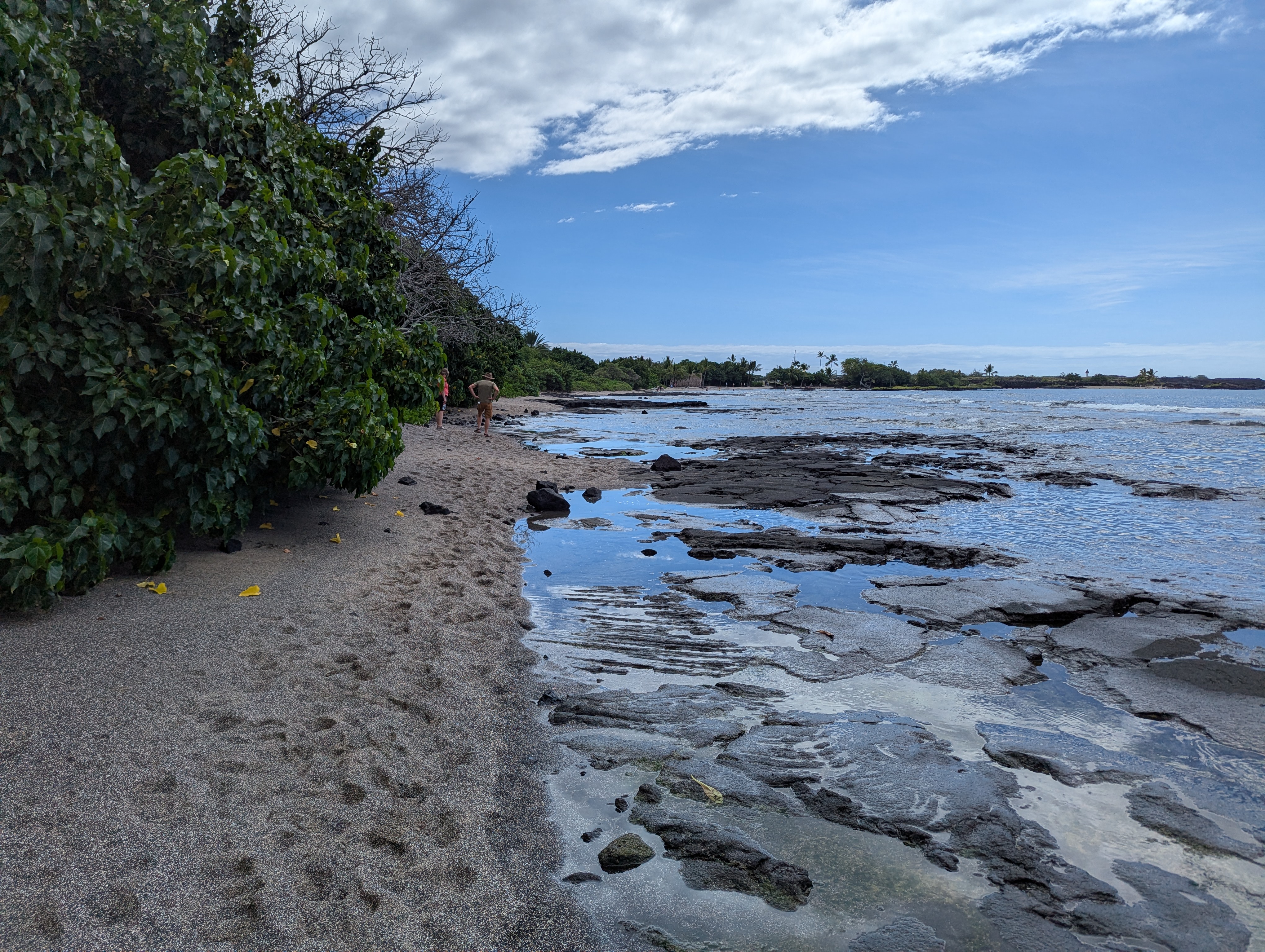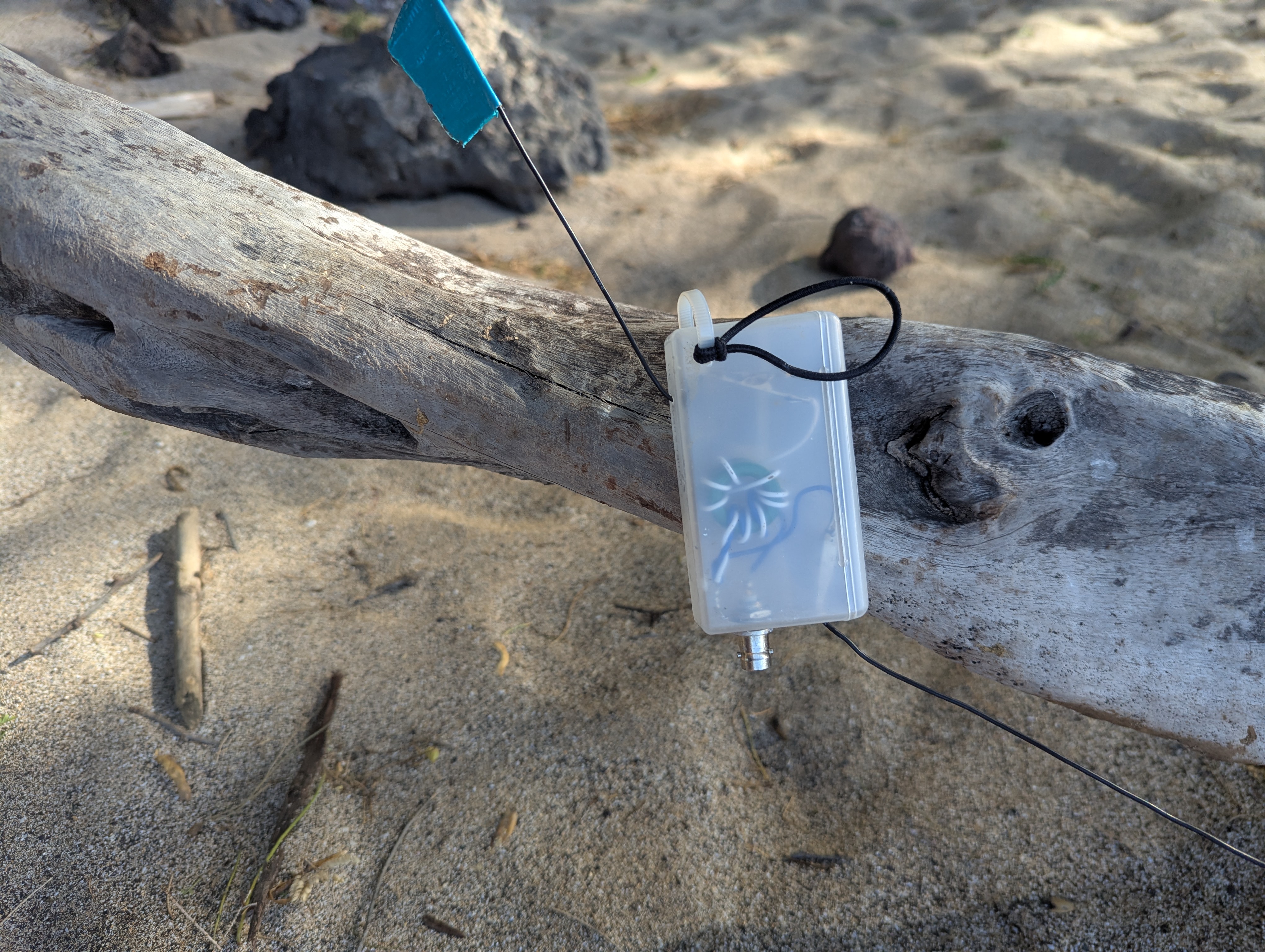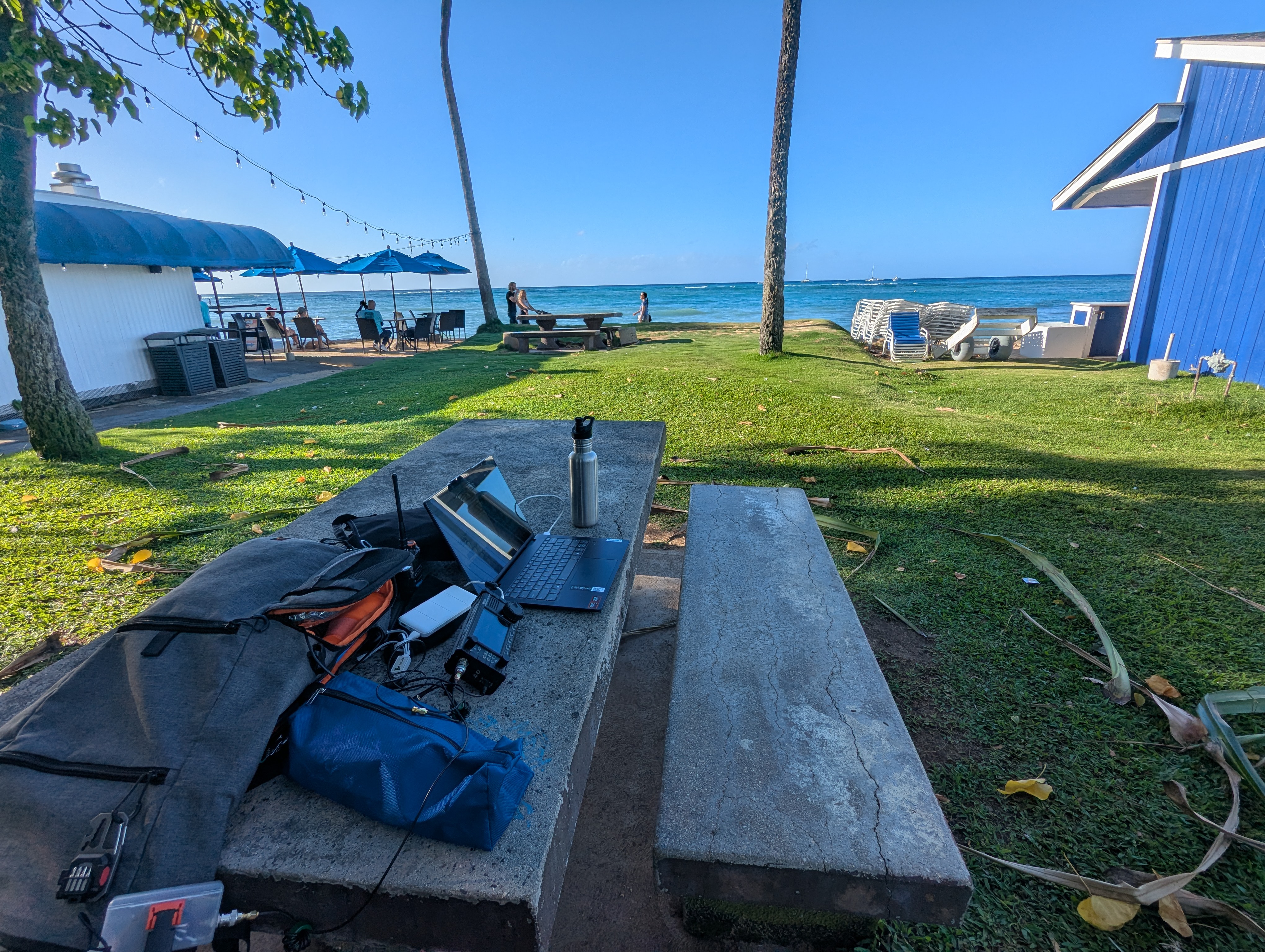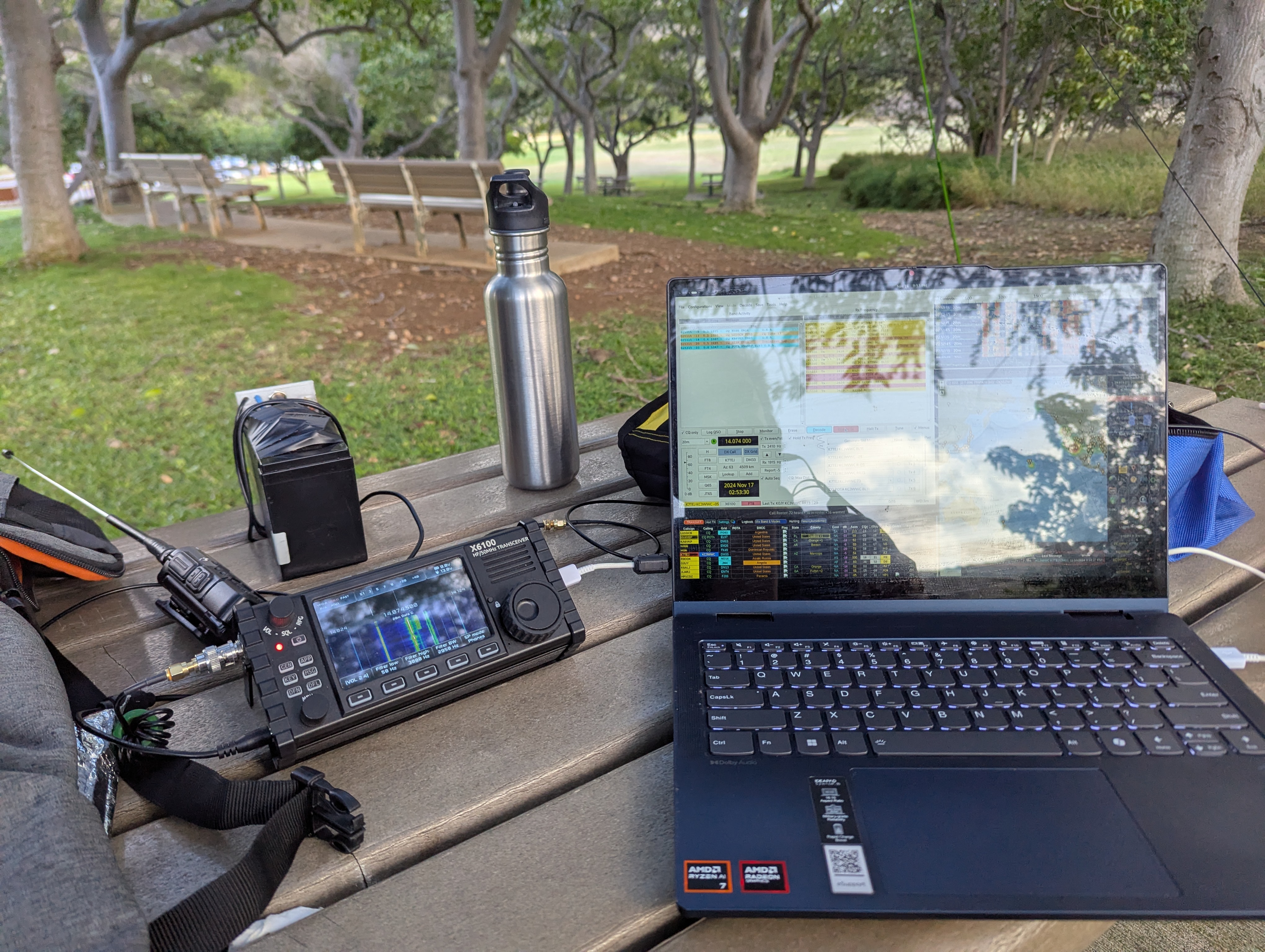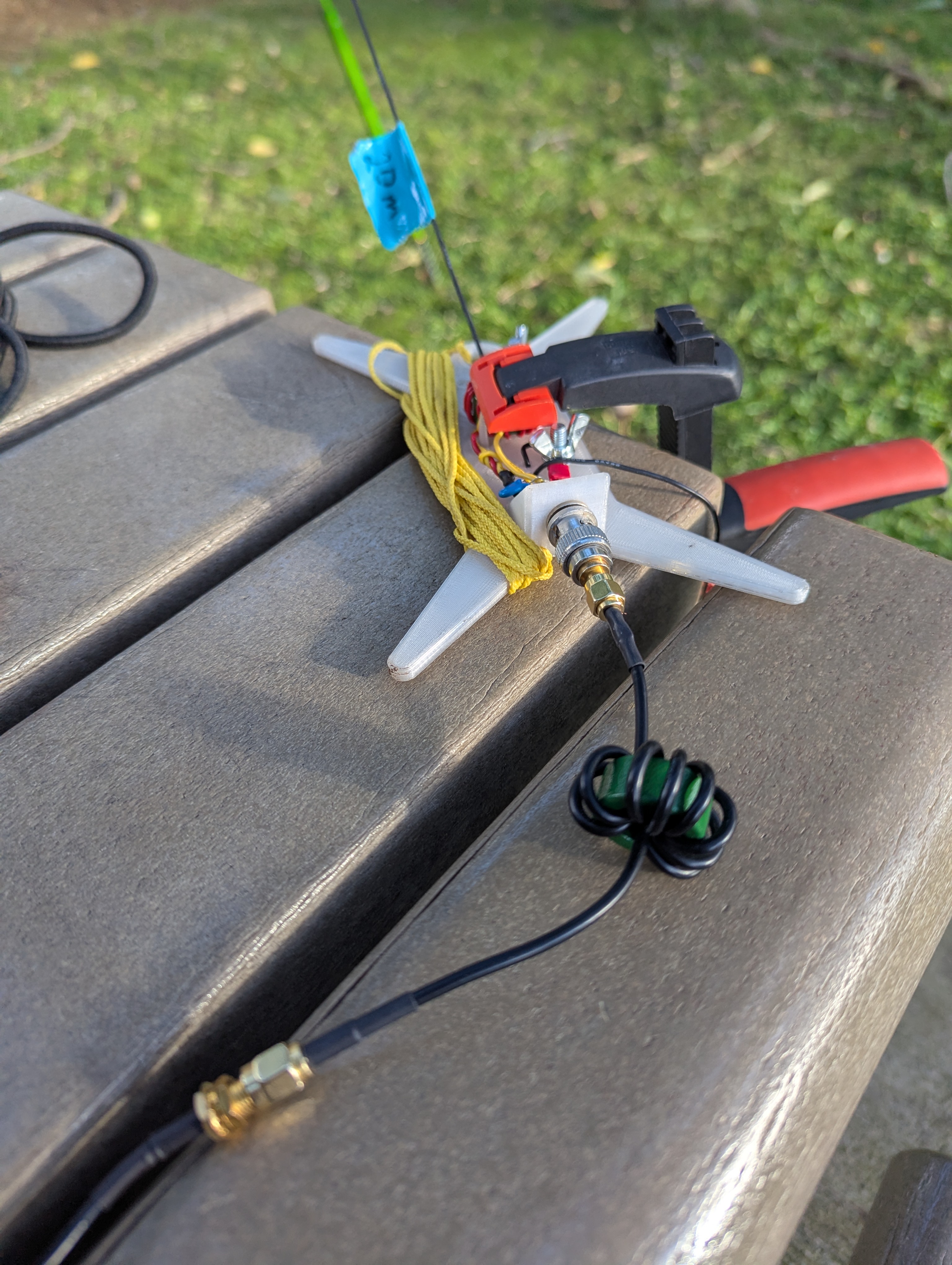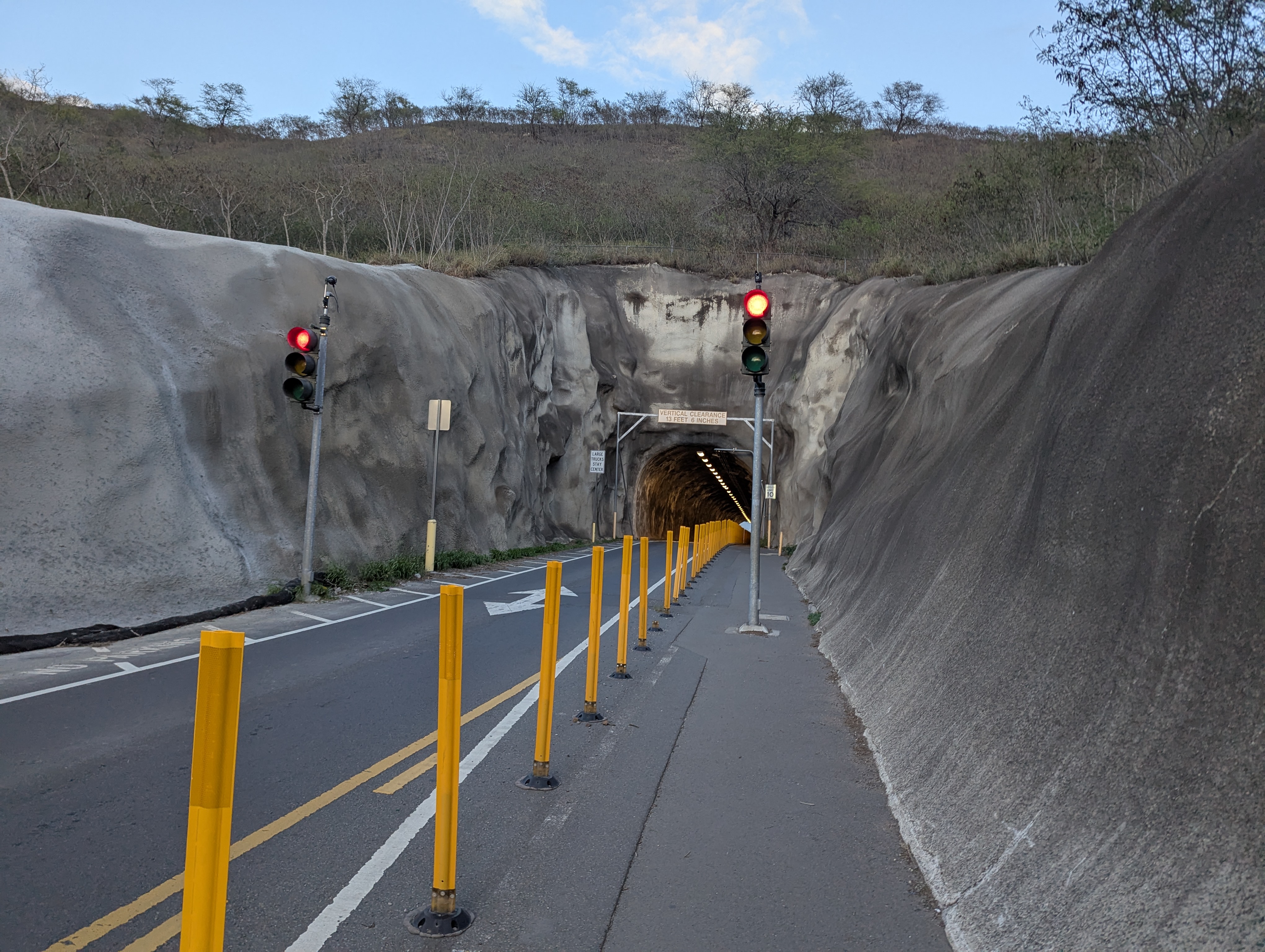I stumbled into a couple Olivia signals
on 14071kHz,
and on a good guess,
I fired up fldigi,
and I was able to decode them.
They were Olivia-8/250 encoded.
I found lots of
good documents on Olivia
to read some mmore about where they’re likely found.
SPARC Member Meeting: 2024-11-26
Club Business
- Elections
- Ideas
- Looking for help with fox hunt
- have the transmitters
- can get help from other clubs
- Looking for help with fox hunt
Presentation: DMR with Jason
- originally designed for professional radio installations.
- lots of motorola gear
- developed in europe first
- digital voice
- data
- components
- radios
- repeaters
- controllers (for routing traffic)
- network infrastructure
- lots of networking and linking over large areas.
- types
- tier 1 - consumer
- tier 2 - professional, trunked
- tier 3 - trunked, large-scale
- TDMA (time-division multiple access) - 2 channels / slots
- narrow bandwidth 12.5khz band
- modes
- private
- group
- broadcast
- data: text, gps, telemetry
- radio id is assigned by radioid.net to you and your call sign
- talkgroup = collecting a bunch of radio ids into a single contact
- popular public networks:
- tgif
- brandmeister
- can also be a private network
- hotspots access dmr network via the internet
- delmarvadmr.com
- 3 building blockse
- talk groups
- channels
- zones
985 Workbench: 2024-11-25
My Week in Radio
- Took down my 2M antennas to straighten and resolder.
- Catching up the radio blog with my recent experiences.
- Trying F4HWN firmware on Quansheng radios
- previous firmware, AUBSUK, for my Quansheng radio was skipping channels when I activated more than 1 scan list.
- larger display with single VFO
- rethinking my scan lists
- the S-meter is calibrated differently from the other firmware
- no questions, because I should just be reading the antenna book
- FT Challenge coming up in 2 weekends. *** Others
- KD3ACF, JT:
- acquired a j-pole for the attic
- new ham with an HT
- magmount on the car, tested with WA3VEE from Manheim High School
- W8CRW, CR:
- 985 activities
- Red Rose activities
- Salem CCARS acitvity
- W3QP, Tim:
- trip to HRO
- planning trips
- WA3VEE, Ron:
- working on an old receiver
- re-capping
- Hammerland hq140x
- terrible, loud 120hz buzz, so ordered capacitors to replace them
- cleaned
- fixed
- needs just a little more work, alignment
- got over to KC3YSM, Steve’s place to help with his antenna
- analyzed
- Buckmaster OCF dipole
- working on an old receiver
- KC3RFG, Jim:
- watching 10m
- Croatia, Belgium
- repairing the 160m/75m dipole, new balun
- AF3Z, Jim:
- testing his 1-tube QRP transmitter
- practiced some CW with a friend on 10m
- found sweden and belgium lower in the band.
- KC3OOK, Bill:
- 985 net, simplex net
- working on tower
- helping Joe, W3GMS, assemble his new tower
- KC3SCY, Luke:
- lots of time off from school this week
- 10m has been wide-open
- spent some time on 40m SSB and AM
- KC3VRW, Phil:
- attempted to build a 10m inverted-V
- MFJ tuner
- trying tech HF frequencies
Questions
- W3QP, Tim: Follow up on battery measurements for the TSA,
Watt-hours instead of Amp-hours.
- bigger batteries have bigger thermal events.
- Wh is the amount of potential power.
- Wh doesn’t require doing the math to consider voltage in combo with Ah.
- 18Ah at 12V.
- The nominal voltage for the cells is less.
- Expected usable volts are even less, so Wh is less than just V*A.
- Nominal voltage can be different across different battery chemistries.
- Nominal voltage may not be obvious.
- 11.1 Nominal voltage might be 12.6V at peak charge.
- Volts and Amps are important for application, but Watt-hours is better overall for capacity.
- AF3Z, Jim:
- tinkering with Hartley oscillator:
mica capacitors, ceramic capacitors,
what’s the difference of all the different capacitors?
- WA3KFT, John:
- ratings: capacitance, voltage.
- The “dry electrolytic” is a paste, not oil.
- main purpose is filtering AC converted to DC.
- filtering some frequencies
- ceramic capacitors are pretty stable, until overheated.
- mica capacitors are small capacitances, pF. used for frequency stablizing.
- variable air capacitor
- oil filled are higher capacitance and used for low frequencies in power supplies, etc.
- WA3VEE, Ron:
- film capacitors
- different dielectric
- used for audio.
- paper capacitor
- dielectric is anything that separates the plates.
- air capacitors
- film capacitors
- W3QP, Tim:
- silver mica are maybe lower loss than ceramic
- multi-layer capacitors for higher currents
- W3DIB, Greg:
- negatives of certain capacitors:
- some dielectrics leak
- tantalums can dead-short, like in a power supply.
- saw a cool video of people building filters for cheap radios in places with heavy RF to keep them working better.
- negatives of certain capacitors:
- WA3VEE, Ron:
- they leak when they get overheated.
- leads to the plate have a little resistance so generate heat.
- capacitor can have a vent that leaks under pressure.
- NA3CW, Chuck:
- capacitors are deceptively complex
- all components have some bit of capacitance, inductance, resistance.
- vacuum dialectric for especially high voltage.
- lots of trade-off characteristics
- some are piezoelectric (microphone), like a condenser microphone
- WA3KFT, John:
- tinkering with Hartley oscillator:
mica capacitors, ceramic capacitors,
what’s the difference of all the different capacitors?
- WA3VEE, Ron:
- homework: does a capacitor allow current to flow through it? KC3SQI, Wayne:
- solar telescope demos on December 11 at some park
21 Tech Net: 2024-11-24
My Weeks in Radio
- QRP on a couple hawaiian islands
- not much 2m activity
- added some repeaters and scanned
- POTA
- Xiegu x6100 mostly turned up to 8W
- mostly 10m-30m and everything in between
- challenging to be on an island where you have to go thousands of miles or you reach no one.
- antennas:
- 40M EFHW where I had room,
- 41ft long EFRW with less room
- vertical whip and coil attached to a fishing pole for a less conspicuous setup on some beaches
- 6 parks and 2 trails on 2 islands:
- sandy beaches
- rocky lava fields
- inside diamondhead caldera
- atop steaming kilauea
- reached:
- west: Australia, New zealand, Fiji, Japan, Russia, China, South Cook Islands, Samoa
- east: North Carolina, Kentucky, Ohio, Dominican Republic, Argentina
- practiced some CW on the beach when I didn’t get out the computer
- back to a home park yesterday, but the weather was not as nice.
- took down my home-made 2m antennas and straightened them up.
- trying F4HWN 3.7 firmware for Quansheng radios
- from a scanner-centered AUBSUK firmware that was skipping some channels
- looking forward to that FT Challenge contest
Other News
- contests
- CQ WW CW this weekend
- no contests for the Thanksgiving weekend
- following weekend
- 160m CW arrl contest
- FT challenge contest
- KA3TKW: R&L electronics: TYT MD-9600, GD-77 open firmware
- digipeat through the ISS
- high pass of ISS tonight at 9:10pm.
- 224.220 repeater is up and running, but not linked yet.
- KC3NNO: mini dxpedition to canada
Antenna Maintenance
The home-brew yagi blows around in the wind a bit, so I brought it down this morning as it started to snow, so I could straighten and tighten the elements. I realigned it for the 985 repeater, and checked it to be giving -96dBm.
I also resoldered some radials on the 1/4-wave ground plane antenna that go knocked loose in the tree.
Next Firmware: F4HWN
Problem: AUBSUK multiple scan list
The scan lists aren’t combining correctly on AUBSUK firmware. It’s skipping entries based on ordering. I realized I was missing most of simplex channels, but seeing the GMRS channels, when I enabled my “simplex” scan list in combo with primary repeaters. There’s an existing issue logged, but it’s hard to describe and to reproduce, I think.
Trying the Next Firmware, F4HWN 3.7
F4HWN is available on GitHub. I loaded it on both radios in place of AUBSUK to see how I get along. I’ve found a few features I really like:
- Scan on start: if it’s scanning when I switch it off, it’ll scanning when switched on.
- 3 scan lists: 1, 2, 3, 123, 0, all
- they don’t recombine as freely, but I have:
- simplex, repeaters, satellites on 1
- GMRS on 3
- they don’t recombine as freely, but I have:
- scan is just as fast as others, so we’ll see if it’s tolerable.
- “main only” display is nice, much easier to read.
- spectrum analyzer with scan range,
but I can’t assign it to a button.
- Fn-5 is only way to activate it.
I think the S-meter is calibrated much differently from AUBSUK, and other firmwares I’ve loaded, calibration for VHF/UHF vs HF, The S-meter seems to read higher than I expect with lots of S9+.
The spectrum analyzer with a range seems wonky at times: it may be scanning the entire range, but the graph doesn’t seem all there. I noticed it with the scan of 144MHz-148MHz.
985 Workbench: 2024-11-18
My Weeks in Radio
- QRP on a couple Hawaiian islands
- Not much 2m activity on the islands
- added some repeaters and scanned
- POTA
- no summits
- all successful activations via FT8/FT4
- allowed me to use pskreporter to study my propagation on different bands, even if other stations didn’t answer my call
- practiced some CW on the beach when I didn’t get out the computer
- mostly turned up to 8W
- mostly 10m-30m and everything in between
- challenging to be on an island where you have to go thousands of miles or you reach no one.
- 6 parks and 2 trails on 2 islands:
- inside Diamondhead caldera
- atop steaming Kilauea
- rocky lava fields
- sandy beaches
- reached:
- west: Australia, New Zealand, Fiji, Japan, Russia, China, South Cook Islands, Samoa
- east: North Carolina, Kentucky, Ohio, Dominican Republic, Argentina
- antennas:
- 40M EFHW where I had room,
- 21.5M-long EFRW with less room
- vertical whip and coil attached to a fishing pole for a less conspicuous setup on some beaches
- It may be time to start cobbling together an allstar node.
Others
- W3JAM, Jeff: Jerry Sevic (w2fmi) books on transformers and baluns
- KC3TMZ, Matt:
- Lives in a park
- Built a dipole and analyzed it
- really good SWR: 1.048:1
- 20 ft into the tree
- reached California on 20m
- ran into ARRL Sweepstakes
- dipole in a tree is a lot of work
- playing with Inovato Hamclock
- WA3VEE, Ron:
- worked ARRL Sweepstakes a bit
- cleared the bench
- may have gear to sell soon
- KB3ZIM, Bob:
- avoided ARRL Sweepstakes
- enjoying 10m
- some 10m AM as well
- spent time in Honolulu and enjoyed the Diamondhead years ago
- KC3RFG, Jim:
- had a balun fail
- KC3YSM, Steve:
- getting an HF antenna up with help from Chuck and Bill
- George lent the launcher
- KC3TYX, Vic:
- Sweepstakes: 75 contacts
- VaraC for keyboard chat on HF
- lost settings and had to setup again
- W3QP, Tim:
- found the 4th edition of the balun book on archive.org
- winding 2 wires around the toroid is a lot like winding coax
- winding 4 wires in opposite directions will give more bandwidtch
- NA3CW, Chuck:
- learned lots from W2FMI book
- W2FMI tested everything extensively
- got Steve’s antenna in the air…through the vines, thorns, etc
- normal nets, including PMA AM net.
- working on an ultimate transmatch tuner
- learned lots from W2FMI book
- KC3OOK, Bill:
- helped with Steve’s antenna today
- 2m band opening on Sunday: PA to Ottawa on DXView
- W8CRW, CR:
- 985 breakfast
- showed wife around 10m tech area
- AF3Z, Jim:
- built a Hartley transmitter for 1929 AMA event
- 1 tube
- 1-2W
- worked 5 stations over 80 minutes
- built a Hartley transmitter for 1929 AMA event
- KV3JGB, Matt:
- 985 breakfast
- launched an antenna with help from 985-ers after breakfast
- starting cwops
- W3MFB, Mike:
- just chatting locally on the radio
- W3FES, Fred:
- building out a new, larger ham desk
- W3MOW, Mike:
- quiet week
Questions
- KC3TMZ, Matt:
- setting up shack in the garage, and ordered a hamclock.
wifi is a bit weak. can he extend with a yagi?
- W3CRW, CR:
- years ago, had a yagi antenna for wifi, and it worked
- wifi extender/repeater does even better
- W3DIB, Greg:
- trench fiber instead of cat5/6.
- isolated from electrical storms
- if you don’t need a ton of bandwidth,
try wifi halow bridge on 900mhz.
- 4Mb
- yagi antenna may pull in noise from others
- trench fiber instead of cat5/6.
- KB3ZIM, Bob: Adam, KB3ZUV, another 985-er, is working on a similar project
- W3CRW, CR:
- flying with HTs?
- WA3VEE, Ron:
- bring a good copy of your license printed from cores
- batteries must be carried on, not checked
- KB3ZIM, Bob:
- batteries are the concern
- check size with the airline
- KC3WWC, John:
- wonderous bag of radio gear
- HT
- 10Ah lifepo4
- QRP radio
- antenna wires
- if you check any gear, separate out the batteries to carry
- wonderous bag of radio gear
- WA3VEE, Ron:
- sent link to website
- limit 8wh, do the math.
- precheck helps smooth the screening
- W8CRW, CR:
- CR has more trouble with carrying powertools since they’re not marked than HT
- WA3VEE, Ron:
- setting up shack in the garage, and ordered a hamclock.
wifi is a bit weak. can he extend with a yagi?
- KB3ZIM, Bob:
- wants to get a wire for 160M in the air.
- could be a long wire with a tuner
- what’s a good length for a random wire
- W3QP, Tim: lots of tables out there
- KC3WWC: google “udel random wire”
- always choke and counterpoise to avoid common mode current
- KB3ZIM, Bob:
- google “ham radio secrets”
- talks about tuning the counterpoise
- could try a super-slinky
- google “ham radio secrets”
- W3DIB, Greg:
- recently got on RF instead of
- has anyone reverse-engineered the serial connections for Yaesu
- W3QP, Tim: could use wireshark to look at serial traffic through usb serial adapter
- KC3WWC, John: there’s cat and drivers for everything
- W3DIB, Greg: this is a lesser radio without cat control, so he’s looking to control all the comms himself
Hawaii
I went to Hawaii for the first couple weeks of November 2024.
I packed up all the POTA radio gear and headed out to fly to Hawaii. I carried all my radio gear and big battery in my carry-on backpack.
I added a few repeaters, and scanned 2M, but didn’t hear anyone on my UV-K6.
I started out operating FT8 at the resort with the EFRW (12.5M) strung between columns on the patio. I could reach stations in Hawaii, Fiji, Australia, New Zealand, Japan, and Oregon on 10m, 12m, 17m, and 20m. I had to turn up to 8W to get heard.
For parks, I operated 6 parks and 2 trails across 2 islands: beaches, lava fields, and volcanos.
On 2024-11-04, I activated US-0753, Pu’uhonua o Honaunau National Historical Park, with the EFHW for 40m strung across trees in the picnic area near the rocky coast. I accidentally split the day, since I wasn’t familiar with the timezone offset. Fortunately, I had enough contacts for an activation in each of the 2 days. Much of the west coast of the big island also counts as US-4565, Ala Kahakai National Historic Trail.
On 2024-11-08, I activated US-0037, Hawaii Volcanoes National Park, with EFHW stretched from a shelter and picnic table to a nearby tree on West Rim Road in the park. I struggled for a bit from my start at 10am. Conditions got better near 2pm local time, and I finished up my activation while having lunch with Emily.
On 2024-11-10 I went to US-2214, Kekaha Kai State Park, after running around a bit to find a spot. I wanted to work fast, and there were no trees in the vast lava field, so I deployed the whip and coil bungied to the fishing pole and the grill of the car. That activation went pretty fast.
On 2024-11-13, I visited US-0739, Kaloko-Honokohau National Historical Park, which is also US-4565, Ala Kahakai National Historic Trail. It had closed an earlier day, so I couldn’t activate that day. It was good, because I hiked the mile or so to setup on the beach and toss the counterpoise for the vertical whip into the ocean.
On 2024-11-16, I walked across Waikiki to US-10923, Artillery District of Honolulu Historic Site. It was pretty early morning and slow. I strung the shorter EFRW (12.5M) from a table to a tree in an inverted V. I chatted a while with another traveling ham, and I didn’t manage to complete my activation. I ran out of time, and packed up.
My last activation was on 2024-11-17, at US-6425, Diamond Head State Preserve, I setup at a picnic table near the hiking trail, US-10913, Diamond Head Summit State Trail. The whole park is in the caldera of the volcano. The EFHW stretched from table to a tree. The antenna wire disconnected from the transformer, but it was close, so it received OK, but trying to transmit showed a high SWR where the antenna would never usually. It was super-windy as the sun set early over the mountain surrounding me.
985 Workbench: 2024-10-28
My Week in Radio
- R1CBU 0.26.0 firmware for my X6100
- I continue to maintain a fork of the code that modifies the database to show boundaries of US privileges and recommended usage.
Questions
- W3MFB, Mike: increased tower height, switched to 60ft of new coax. 35W
1.9:1 SWR, so worse than it was before. UHF is bad too.
Checked it with NanoVNA. Seeing 1.3:1 SWR. Trying an analog SWR meter.
Using Yaesu 991A. Showing 2:1 SWR. SWR goes up with different power.
- NA3CW, Chuck: Test the tester. SWR shouldn’t change with power. Could be something heating.
- W3QP, Tim: He does see different SWR at higher power due to reflections from his car. Shorter coax is better, but stay away from quarter wavelengths.
- W3JAM, Jeff: Test the tester. Hearing him fine on the input, so it’s good.
- AF3Z, Jim: RF, common mode current, into the meter can cause erratic behavior.
- NA3CW, Chuck: RF on outside of the feed line is sometimes hard to avoid, and can cause reading issues. Grabbing line at different places will cause readings to change.
- W3QP, Tim: Some antennas recommend at least a turn of cable at the antenna to choke.
- KC3OOK, Bill: 1.2 to 1.3 is a 0.9% loss.
- W8CRW, CR: is that antenna tune-able.
- W3MFB, Mike: may try ferrite beads at a height he can reach.
- W3MOW, Mike: Looking at Electric Vehicles. Who knows a reputable electrician to run power? Drop him the email you find on QRZ.
- KC3TMZ, Matt: Getting noise with random wire on G90. 71ft 9:1 wire.
How does one run the counterpoise?
- KC3MFB, Mike: 17 ft, opposite direction, if at all.
- KC3RFG, Jim:
- try different places.
- choke at the radio, especially if you don’t
- run a counterpoise
- W3QP, Tim:
- There is always a counterpoise, so provide one so you can control it.
- Number of turns or number of beads will be effective at different frequencies.
- NA3CW, Chuck: There’s an article on 985 website.
- KC3NZT, Harvey:
- The further from a balanced antenna, the more it’ll force a counterpoise, and that means your coax, so changes around your antenna (body) can change things as well.
- Run the counterpoise opposite a sloper or flat topper,
- you can get some gain in the direction of the counterpoise.
- KC3TMZ, Matt: Propagation to light/dark places?
- W3MFB, Mike: wire runs NE-SW, and it doesn’t matter for direction too much.
- KC3NZT, Harvey: Do you hear them? How do you know you’re not getting to them?
- Can hear them, but they don’t hear him. Did manage Belarus once.
- Do they have other stations calling them? Is it a pile-up?
- He’s getting beat for only 20W.
- Don’t get discouraged. It takes some technique.
- W3MFB, Mike: Don’t worry about 20W. Don’t call QRP.
- W3QP, Tim: Operates a lot of 10W. Propagation depends on radiation pattern. EFRW can have weird patterns with spiky lobes.
- KC3TMZ, Matt: lots to learn, will take a recording from Ron.
- KC3WWC: Headed to Hawaii for a couple weeks and taking radios for all bands.
What should I expect/try while traveling?
- W3QP, Tim:
- SOTA from volcanos!
- salt water will give a great boost for DX.
- lots of asia
- W3QP, Tim:
- WA3VEE, Ron: the virtues of broadcastify
Bug with TYT TH-9800
I can set a repeater offset from Chirp, and that works fine, but it displays incorrectly in the SHIFT setting on the radio. It displays as 7.60MHz for every repeater frequency. Apparently, visiting the setting in the menus gets the really bad value (7.6MHz) applied until you leave the channel and come back.
Reversing the repeater frequencies (assigned to P1 on the microphone) shows the right frequencies. Programming it from Chirp as a split (instead of +/- offset) works, but still doesn’t show correctly in the menus.
The radio also only allows setting by 10kHz manually, so setting my 605kHz shift for W3GMS is impossible to program from the radio.
There’s already a bug filed for Chirp.
